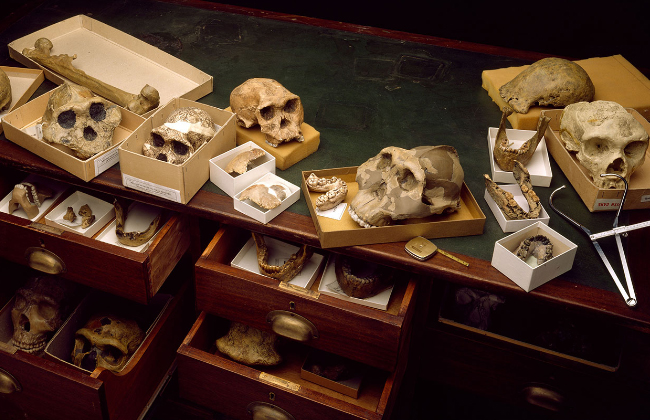Fossil Homonids: Understanding Our Evolutionary Ancestors
Fossil hominids, also known as early humans, are extinct species of the Homo genus that lived millions of years ago. These ancient creatures provide valuable insights into the evolutionary history of humanity and shed light on our origins, behaviors, and adaptations. In this article, we will explore the fascinating world of fossil hominids and the key discoveries that have shaped our understanding of human evolution.
Hominid Evolution: A Brief Overview
The hominid lineage diverged from the chimpanzee lineage around 6-7 million years ago in Africa. Over time, different species of hominids evolved, with various anatomical and behavioral adaptations, until the emergence of Homo sapiens (modern humans) around 300,000 years ago. The hominid evolutionary tree is complex and includes several extinct species such as Homo erectus, Homo habilis, and Australopithecus afarensis, among others.
Key Fossil Homonid Discoveries
The study of fossil hominids is a multidisciplinary field that involves paleontology, archaeology, genetics, and other sciences. Here are some of the most important fossil hominid discoveries that have advanced our knowledge of human evolution.
Australopithecus afarensis (Lucy)
In 1974, an international team of scientists discovered the partial skeleton of a female hominid in Ethiopia, which they named Australopithecus afarensis. This species lived between 3.9-2.9 million years ago and is considered one of the earliest hominids. The most famous specimen is Lucy, a 3.2-million-year-old fossil of a partial skeleton that provided important insights into the bipedal locomotion of early humans.
Homo erectus (Java Man)
Homo erectus lived between 2 million-100,000 years ago and is considered the first hominid species to leave Africa and colonize other parts of the world. The discovery of Java Man, a set of fossils found in Indonesia in the early 20th century, was a major breakthrough in hominid paleontology. Java Man provided evidence of early hominids’ ability to use tools, control fire, and adapt to different environments.
Homo neanderthalensis (Neanderthals)
Neanderthals lived between 400,000-40,000 years ago in Europe and parts of Asia. They were robustly built, with a large brain size, and exhibited behaviors such as burial of the dead and symbolic art. The discovery of Neanderthal fossils in the 19th century sparked debates about their relationship to modern humans. Recent genetic studies have shown that Neanderthals interbred with modern humans, and their DNA can be found in some present-day populations.
Homo floresiensis (Hobbit)
Homo floresiensis, also known as the Hobbit, is an extinct hominid species that lived on the Indonesian island of Flores between 95,000-17,000 years ago. This species had a small body size, a small brain, and used stone tools. The discovery of the Hobbit in 2003 challenged our understanding of hominid evolution and raised questions about the diversity and complexity of early human species.
Why Fossil Homonids Matter
Studying fossil hominids is essential for understanding our evolutionary history, but it also has broader implications for fields such as medicine, genetics, and archaeology. Here are some of the reasons why fossil hominids matter.
Insights into Human Adaptation
Fossil hominids provide valuable insights into how early humans adapted to different environments and developed new behaviors and technologies.
![]()





